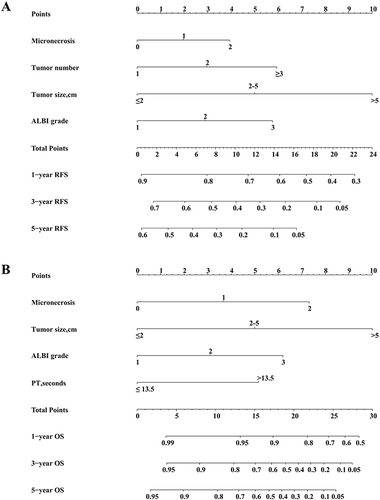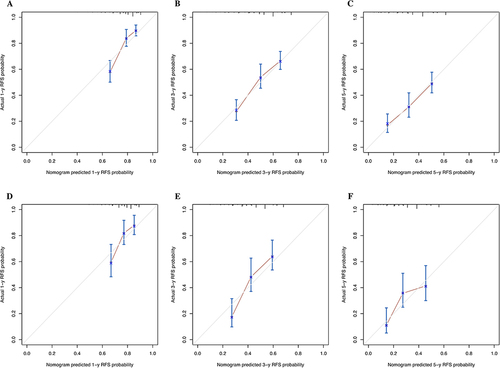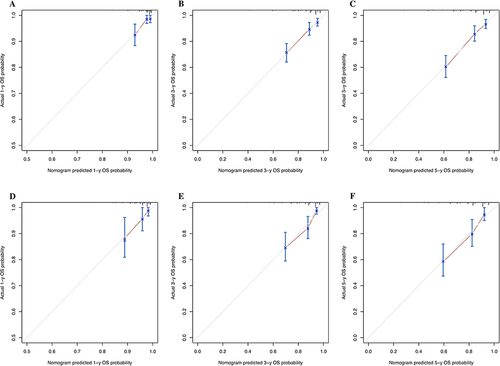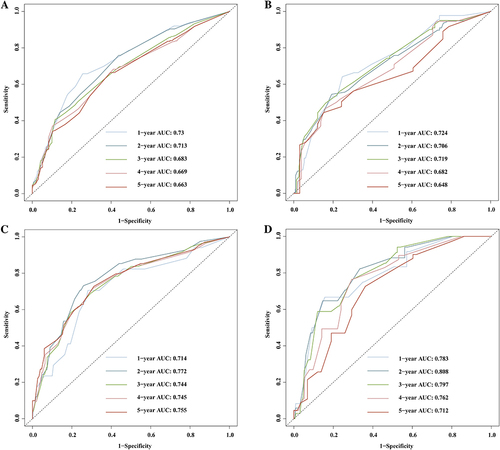Figures & data
Table 1 Baseline Characteristics of the Training and Validation Cohorts
Table 2 Univariate and Multivariate Analyses for RFS and OS in the Training Cohort
Figure 1 The recurrence-free survival (RFS) nomogram (A) and overall survival nomogram (OS) nomogram (B) for predicting postoperative recurrence and death in HCC patients.

Figure 2 The calibration curves for predicting the 1-, 3- and 5-year recurrence-free survival (RFS) in the training (A–C) and validation (D–F) cohorts.

Figure 3 The calibration curves for predicting the 1-, 3- and 5-year overall survival (OS) in the training (A–C) and validation (D–F) cohorts.

Figure 4 The receiver operating characteristics curves (AUROC) of 1-, 2-, 3-, 4- and 5-year recurrence-free survival (RFS) in the training (A) and validation (B) cohorts, and the AUROCs of 1-, 2-, 3-, 4- and 5-year overall survival (OS) in the training (C) and validation (D) cohorts.

Table 3 C-Indexes of Different Prognostic Models for RFS and OS in the Training and Validation Cohorts
Figure 5 The time-dependent area under the receiver operating characteristic curves (td AUROC) of recurrence-free survival (RFS) nomogram and other staging systems (TNM, BCLC, CUPI, HKLC, JIS, Tokyo score and CLIP) since hepatic resection over time in the training (A) and validation (B) cohorts, and the td AUROCs of overall survival (OS) nomogram and other staging systems in the training (C) and validation (D) cohorts.

Data Sharing Statement
The datasets used during the current study are available from the corresponding authors on reasonable request.
